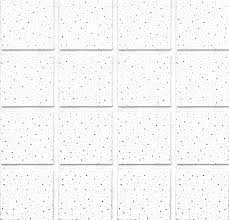9 月 . 25, 2024 16:55 Back to list
cross tee ceiling
Understanding Cross Tee Ceilings A Comprehensive Guide
Cross tee ceilings are an essential element in modern architectural design, particularly in commercial and industrial spaces. This ceiling system is not only functional but also provides aesthetic versatility, allowing for a range of designs and finishes. In this article, we’ll delve into what cross tee ceilings are, their components, advantages, installation processes, and applications.
What are Cross Tee Ceilings?
Cross tee ceilings refer to a grid ceiling system where the main support beams (or main tees) span the larger distances in a room, while the cross tees fill in the gaps, creating a grid-like structure to support ceiling tiles or panels. This grid is made of lightweight materials, often metal, which offers durability and ease of installation. The tiles can be made from various materials including mineral fiber, metal, or gypsum, allowing for different aesthetic finishes and acoustic properties.
Components of Cross Tee Ceilings
The main components of a cross tee ceiling include
1. Main Tees These are the primary support beams that run the length of the room, providing stability to the entire ceiling structure. 2. Cross Tees Positioned perpendicular to the main tees, the cross tees connect to form a grid. They typically come in various standard lengths (usually 24 inches or 48 inches).
3. Wall Moulding This is installed around the perimeter of the room to help secure the grid system, providing a neat finish while supporting the edges of the ceiling tiles.
4. Ceiling Tiles The visible surface of the ceiling is made up of tiles that come in various designs and finishes. These tiles can also be customized to enhance acoustic performance or aesthetic appeal.
5. Hangers These hang from the building structure to support the main tees, ensuring the ceiling grid is securely mounted above.
Advantages of Cross Tee Ceilings
Cross tee ceilings offer numerous advantages, making them a popular choice for many types of buildings
1. Ease of Installation The modular nature of cross tee ceilings allows for quick and straightforward installation, reducing labor costs and time on site.
2. Access to Utilities The grid system provides easy access to plumbing, electrical, and HVAC systems hidden above the ceiling, allowing for maintenance and repairs without disruptive demolition.
3. Aesthetic Flexibility With a wide variety of tiles and finishes available, cross tee ceilings can be customized to meet the specific design requirements of a space.
cross tee ceiling

5. Cost-Effectiveness Compared to other ceiling systems, cross tee ceilings are often more economical. Their lightweight materials and efficient installation make them a budget-friendly option.
Installation Process
Installing a cross tee ceiling involves several key steps
1. Planning Measure the room accurately and plan the layout of the grid to ensure proper fit and weight distribution.
2. Installing Wall Moulding Attach the wall moulding around the perimeter of the room, ensuring it is level.
3. Installing Hangers Attach the hangers to the structural supports above, positioning them according to the grid layout.
4. Mounting Main Tees Align and secure the main tees in place, ensuring they are level and evenly spaced.
5. Adding Cross Tees Insert cross tees between the main tees, creating a robust grid system.
6. Fitting Ceiling Tiles Finally, insert the ceiling tiles into the grid, ensuring they fit snugly and create a seamless appearance.
Applications of Cross Tee Ceilings
Cross tee ceilings can be seen in various environments, including
- Commercial Buildings Office spaces often use cross tee ceilings for their acoustic benefits and access to utilities. - Retail Spaces The flexibility of design allows for creative displays and branding opportunities.
- Healthcare Facilities The ability to customize ceiling tiles for infection control and sound attenuation makes them an ideal choice.
- Educational Institutions Classrooms and auditoriums utilize cross tee ceilings for their sound-absorbing qualities.
Conclusion
In summary, cross tee ceilings are a practical and versatile solution for many architectural needs. With their ease of installation, aesthetic flexibility, and functionality, they continue to be a preferred choice in commercial, industrial, and institutional buildings. Whether you're considering a new installation or a renovation, understanding the benefits and components of cross tee ceilings will help you make an informed decision that enhances the overall design and functionality of your space.
-
Revolutionizing Interior Design with Ceilings t grid Suspended SystemNewsOct.29,2024
-
Revolutionizing Ceiling Design with ceiling access panel with Gypsum Tile WaterproofNewsOct.29,2024
-
Revolutionizing Interior Design with PVC Gypsum Ceiling: A Comprehensive GuideNewsOct.29,2024
-
Elevating Interior Design with High quality Mineral Fiber Ceiling TilesNewsOct.29,2024
-
Revolutionizing Interior Design with PVC Gypsum Ceiling: A Comprehensive GuideNewsOct.29,2024
-
Elevating Interior Design with High-Quality Mineral Fiber Ceiling Tiles: A Comprehensive GuideNewsOct.29,2024







